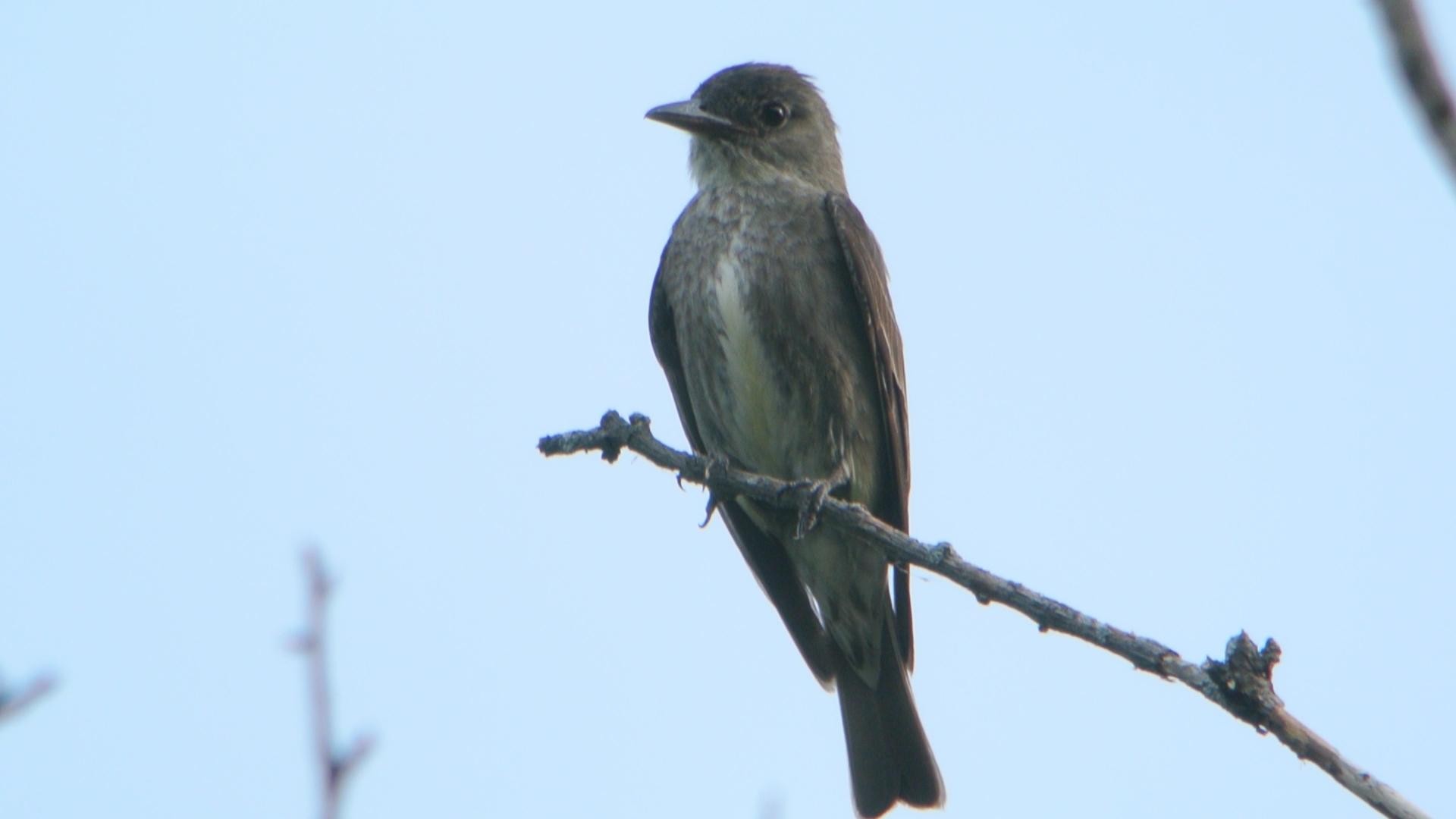Olive-sided Flycatcher
A species of Pewees Scientific name : Contopus cooperi Genus : Pewees
Olive-sided Flycatcher, A species of Pewees
Botanical name: Contopus cooperi
Genus: Pewees
 Photo By Andy Reago & Chrissy McClarren , used under CC-BY-2.0 /Cropped and compressed from original
Photo By Andy Reago & Chrissy McClarren , used under CC-BY-2.0 /Cropped and compressed from original Description
The olive-sided flycatcher is a stocky bird with long wings. The bird has gray brown top feathers, dark gray sides, and a white chest. Olive tones may be visible in optimal lighting and fresh plumage. Measurements: Length: 7.1-7.9 in (18-20 cm) Weight: 1.0-1.4 oz (28-40.4 g) Wingspan: 12.4-13.6 in (31.5-34.5 cm) 
Size
19 cm (7.5 in)
Colors
Brown
Black
Gray
White
Life Expectancy
7 years
Nest Placement
Tree
Clutch Size
3 - 4 eggs
Incubation Period
1 brood
Number of Broods
15 - 19 days
Nestling Period
15 - 19 days
Feeding Habits
Olive-sided Flycatcher feed primarily on flying insects such as ants, wasps, bees, dragonflies, grasshoppers, beetles, moths, and flies, caught mid-flight. Occasionally they may consume berries, especially during migration or nonbreeding seasons. They typically forage from high perches, sallying forth to snatch prey from the air.
Habitat
Olive-sided Flycatcher's primary habitats include boreal forests and coniferous woodlands, with a preference for areas combining live and dead trees. They occupy environments from sea level up to 10,000 feet and favor forest edges near water sources such as meadows and streams for foraging. During migration, similar forest gaps and edges are preferred, though proximity to water is not as crucial.
Nest Behavior
Females, sometimes with male assistance, select the site and construct the nest. Nest placement varies by region, from 5 to 197 feet high. Olive-sided Flycatcher typically displays a seasonal pattern in nest building, egg-laying, and rearing young with both parents involved in care.
Nest Characteristics
Olive-sided Flycatcher's nest is often found on a horizontal branch, away from the trunk, in coniferous trees and occasionally in other types like aspen or oak. It is a loose, small cup-shaped structure with an exterior diameter of roughly 4.6 inches, crafted from twigs, rootlets, grasses, lichens, and needles.
Dite type
Insectivorous
Migration Overview
Of all the flycatcher species that breed in the United States, the olive-sided flycatcher has the longest migration. Some olive-sided flycatchers migrate up to 7,000 miles traveling between central Alaska and Bolivia. 
General Info
Feeding Habits
Bird food type
Bird Feeder Type

Platform
Behavior
Olive-sided Flycatcher exhibits a lively and vigorous nature, typically engaging in robust aerial pursuits to catch insects or fend off rivals. These flycatchers are notably territorial, maintaining expansive territories that can exceed 100 acres and are often isolated by unsuitable habitat stretches. Their daily routine consists of defending this space, sometimes engaging in dramatic chases to exclude intruders. During mating seasons, males enchant females with spirited aerial displays and coordinated flight patterns. They display strong pair bonds, evident through mutual crest-raising, bill-clicking, and synchronized body movements, which may persist through successive breeding seasons. Notably, olive-sided Flycatcher also defends wintering territories abroad, a behavior uncommon among their migratory peers, indicating their uniquely possessive and competitive disposition.
Species Status
The numbers of this bird are declining, probably due to loss of habitat in its winter range. 

 Photo By Andy Reago & Chrissy McClarren , used under CC-BY-2.0 /Cropped and compressed from original
Photo By Andy Reago & Chrissy McClarren , used under CC-BY-2.0 /Cropped and compressed from original Scientific Classification
Phylum
Chordates Class
Birds Order
Perching birds Family
Tyrant flycatchers Genus
Pewees Species
Olive-sided Flycatcher